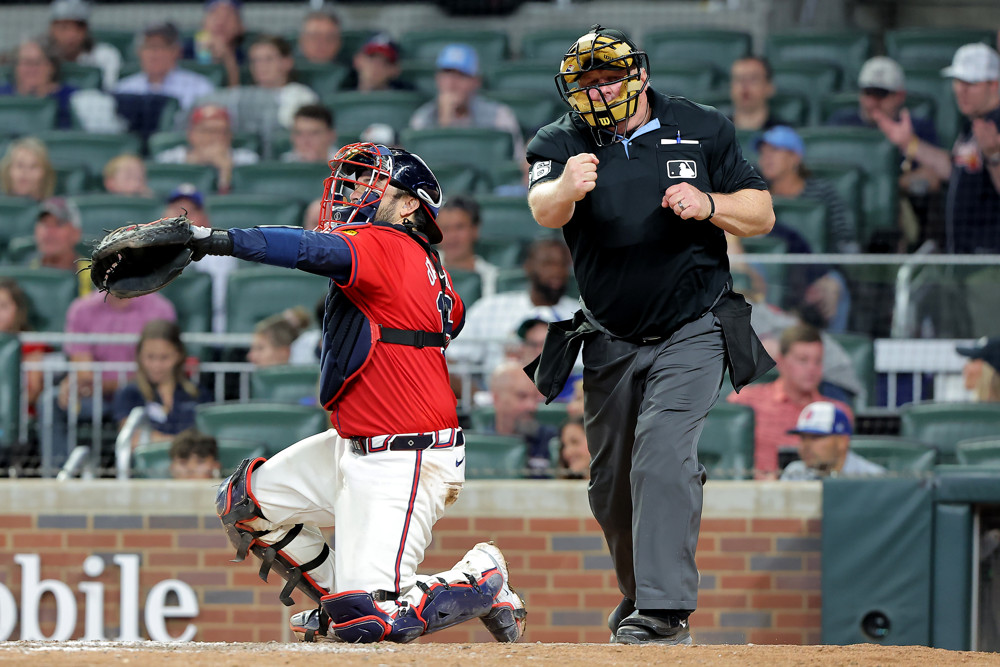By ANDREW KYNE
With a new season upon us, teams are hoping that 2019 is the year they can beat the infield shift. Consider this out of Mets camp last week, via MLB.com’s Anthony DiComo:
From the Dominican Summer League on up to the Majors, the Mets’ new front office is placing increased emphasis on bunting and situational hitting. When teams employ defensive overshifts on their Minor Leaguers, the Mets — for the first time — are encouraging their players to bunt to beat them.
Bunting against the shift isn’t a new idea, but hitters haven’t really embraced it as a strategy.
One batter, however, did it far more than most in 2018: Rougned Odor of the Texas Rangers. Odor’s 20 bunts against infield shifts were by far the most in MLB:
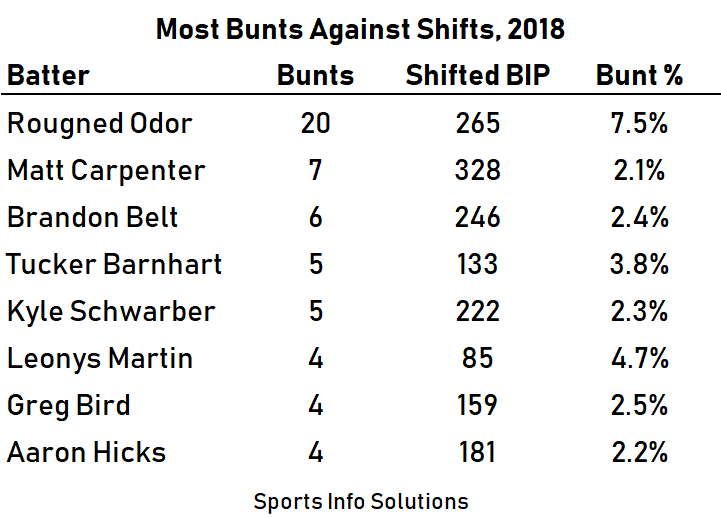
So, I decided to watch those 20 bunts and figure out what I could learn. Does it work? How do teams react? Let’s find out.
It’s not foolproof
First, how often was Odor actually successful?
It turns out that he only went 7-for-18 on these bunts. (Two of the outs had men on base and went down as sacrifices.)
Of course, .389 isn’t a bad batting average to own, but you have to consider these are only going for singles, and therefore providing nothing in the slugging department.
The league as a whole hit .584 (122-for-209) on bunts against shifts last season. Not bad, but it’s not perfect and relates to a point Matt Carpenter made to ESPN.com last summer. Though he’s specifically talking about hitting grounders to the left side, it also applies to dropping down a bunt:
“Let’s just say I sell out tonight, and I try it four times. The likelihood of me hitting four straight ground balls to short and ending up 4-for-4 are very slim. If I succeed once or maybe twice, at best I’m going to go 2-for-4 with two singles, where if I just play the game, I might go 2-for-4 with a homer and a double.”
The accuracy needs to be pinpoint
So how do you improve on Odor’s .389 average or even the league’s .584? The execution needs to be strong.
Consider a play like this one against the White Sox. Odor bunts it to the third base side, yet Reynaldo Lopez gets off the mound and throws him out with relative ease.
Ideally, the bunt will be further away from the pitcher than that one, and preferably as close to the third base line as possible. That obviously requires great accuracy.
Here’s a look at a spray chart of all the bunts against shifts from left-handed hitters in 2018. The red points represent hits, and the blue points represent outs. There are a lot of hits down the third base line, especially if it can get past the pitcher.
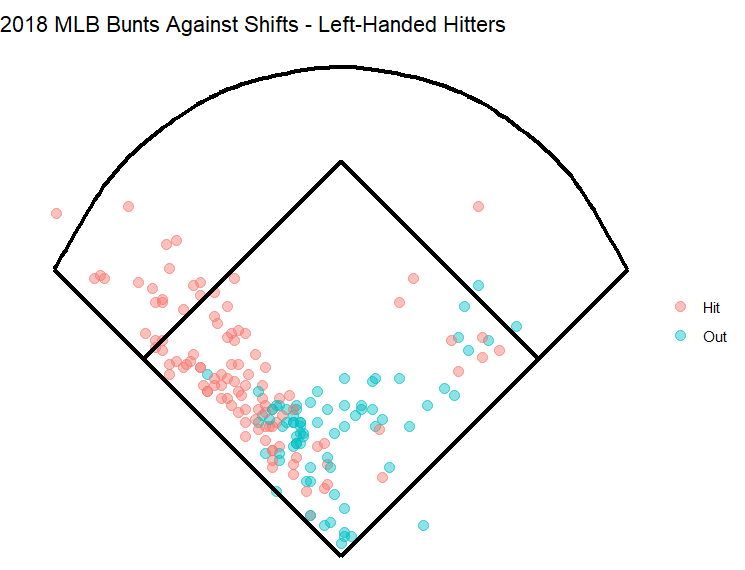
But even then, you can find pitchers who are able to get off the mound and make plays. Check out this play by Jose Berrios, who would have thrown out Odor here if Joe Mauer held onto the ball at first base.
The defense will be ready
This was my biggest takeaway from watching these plays. I think a lot of times when people talk about beating the shift and they suggest laying a bunt down, they’re imagining a defensive alignment like this:
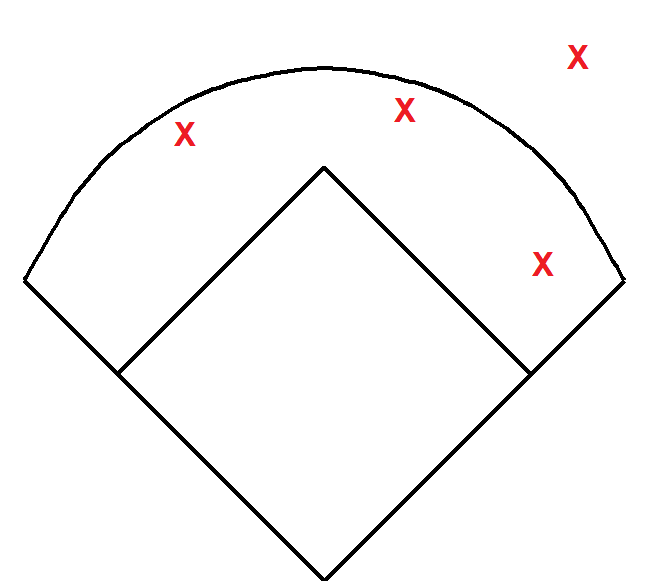
Either the shortstop or third baseman moves over to the right side, and the one who stays on the left side plays where the shortstop would traditionally be.
Yet out of these 20 Rougned Odor bunts, this one against Baltimore was the only one I saw that didn’t have a fielder on the left side of the infield playing up near the edge of the infield dirt, protecting against the bunt. (And he still didn’t get a hit on it!)
Kyle Seager mentioned this in the same ESPN.com article that’s referenced above: “I’ve tried to bunt a few times, and I’ve had a few successes. But the third baseman is usually still in there for the first two strikes, so the bunt is not as big a factor as it could be.“
This appears to be true for Odor as well. Our company charts the starting positions of infielders on grounders and short liners.
Here’s a look at where third basemen, when in a shifted alignment, played against Odor in 2018 when he put grounder/liner into play with fewer than two strikes:
3B Positioning vs. Odor: < 2 Strikes
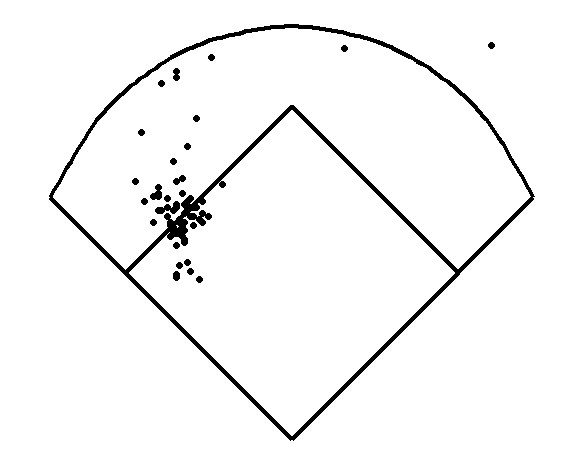
And here’s a look at where third basemen, when in a shifted alignment, played against Odor when he put a ball in play with two strikes:
3B Positioning vs. Odor: 2 Strikes
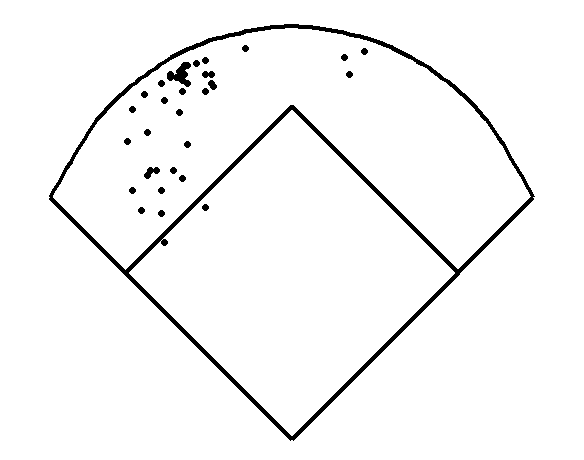
(The straight lines represent the base lines, rather than the true edges of the infield grass.)
You can see that with fewer than two strikes, the 3B typically stayed at home to protect against the bunt. But with two strikes — and the threat of a bunt all but eliminated — the 3B would more often move back.
The case of Rougned Odor shows that there’s difficulty in bunting against the shift. Perhaps the Mets will gain an edge by emphasizing it at the minor league level and developing accurate bunters, but opposing defenses will continue protecting against it to some degree.

